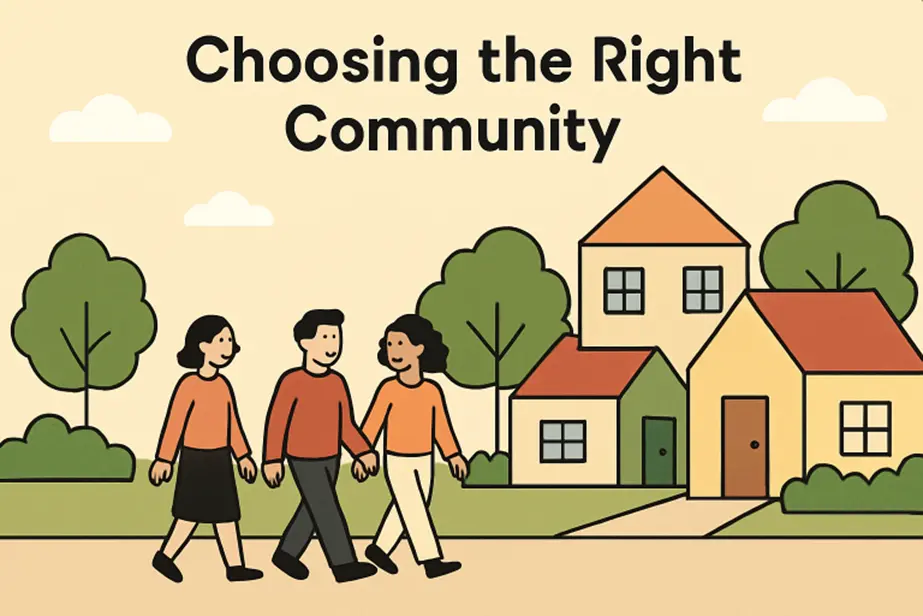How to Choose the Right Neighborhood for Your Next Home
Finding the perfect place to live is more than just picking a house—it’s about knowing that the area will fit your needs and aspirations. Whether you’re looking for a suburban retreat, a lively urban setting, or a tranquil community in between, the right neighborhood lays the groundwork for how you feel day-to-day. For those starting their search, exploring Fallbrook CA homes for sale can be a smart way to visualize life in various locales. Deciding on a community means researching safety, evaluating schools, considering amenities, and engaging with local residents. It also involves taking into account both your current lifestyle and your future plans, guaranteeing not just convenience but also a sense of belonging as your needs evolve. Engaging with these practical steps will help you identify a neighborhood where you truly feel at home.
Remember, a neighborhood is more than streets and homes—it also shapes your social interactions, your children’s education, and even the resale value of your investment. Don’t rush the process; spend time understanding the different characteristics that define each community you’re considering. As you evaluate your options, it’s vital to consider how trends in local economics and real estate can impact future growth.
Assess Your Lifestyle Needs
Start by making a list of your top priorities and what you envision for your daily life. Are you seeking quick commutes, active nightlife, or peaceful evenings? Do you want to be near work, family, or close to outdoor recreation spots? Clarify whether a walkable neighborhood, ample green space, or artisanal shops are must-haves. Only by aligning your search with your lifestyle can you make a decision you’ll appreciate in the long term. Your work and school schedule, hobbies, and family routines all play a role. Map out your typical week and consider how potential neighborhoods support those routines. For instance, families may value access to parks and kid-friendly attractions, while remote workers may seek out quiet surroundings or co-working spaces.
Research Safety and Crime Rates
Safety is essential for a comfortable living experience. Utilize public crime data, police department records, and community watch reports to get a full picture of local trends. Consider both violent and property crime statistics, and pay attention to feedback from local forums or neighborhood groups. Walking or driving through the area at different times also helps you gauge how safe the streets and community spaces feel beyond the statistics. Real estate websites often include safety ratings, and major publications provide advice on evaluating neighborhood safety for families moving in.
Evaluate Local Schools
Excellent schools attract both families and investors. Even if you don’t have children, a strong school district can boost home values and resale potential. Research test scores, graduation rates, and after-school programs. Visit campuses if possible and check parent reviews on platforms like GreatSchools.org. Talking with local parents will give you a realistic sense of the district’s strengths and any changes in progress.
Consider Amenities and Convenience
Easy access to everyday essentials—groceries, healthcare, fitness centers, and dining—makes a community thoroughly livable. Explore local businesses and ask residents which amenities they use most. Proximity to attractions like trails, dog parks, or entertainment venues could be a decisive factor.
- Shopping and dining for a variety of budgets and tastes
- Health facilities for urgent care and routine wellness
- Fitness options, parks, and open spaces
- Accessible and reliable public transportation
Public transit availability or low-traffic streets can also influence your experience, especially if you commute regularly or have specific accessibility needs.
Visit at Different Times
Neighborhoods often show different sides depending on when you visit. Return at lunch hour, rush hour, after dark, and during weekends to observe how the pace and noise levels change. This can reveal hidden issues like late-night disturbances or traffic congestion that aren’t apparent during a single visit. You might also notice popular community spots or events that only appear at certain times.
Engage with Local Residents
Speaking to people who already live in the area is invaluable. Ask about what they love, what they wish were different, and any challenges they face. Residents often share unfiltered, practical advice about the neighborhood culture, community events, local businesses, and potential concerns such as school zoning changes or infrastructure updates.
Analyze Property Values and Future Developments
Study median home prices, appreciation rates, and how long listings stay active. These data points signal the neighborhood’s stability and growth potential. Research local government sites or planning departments to learn about future public projects, infrastructure improvements, and new commercial developments—factors that can elevate or detract from your home’s value over time. Comparing current trends with expert real estate reports can help you make a thoroughly informed investment decision, reinforcing both your comfort and financial security.
Conclusion
Choosing the right neighborhood is a blend of research, self-reflection, and real-world observation. A thoughtful approach—factoring in lifestyle, safety, amenities, schools, and future growth—ensures your next move delivers the lifestyle, security, and sense of home you envision. Take your time, verify information from reputable sources, and consider visiting neighborhoods in person before making your final decision. Your peace of mind and happiness depend on where you put down roots and build your future.
Also Read-

